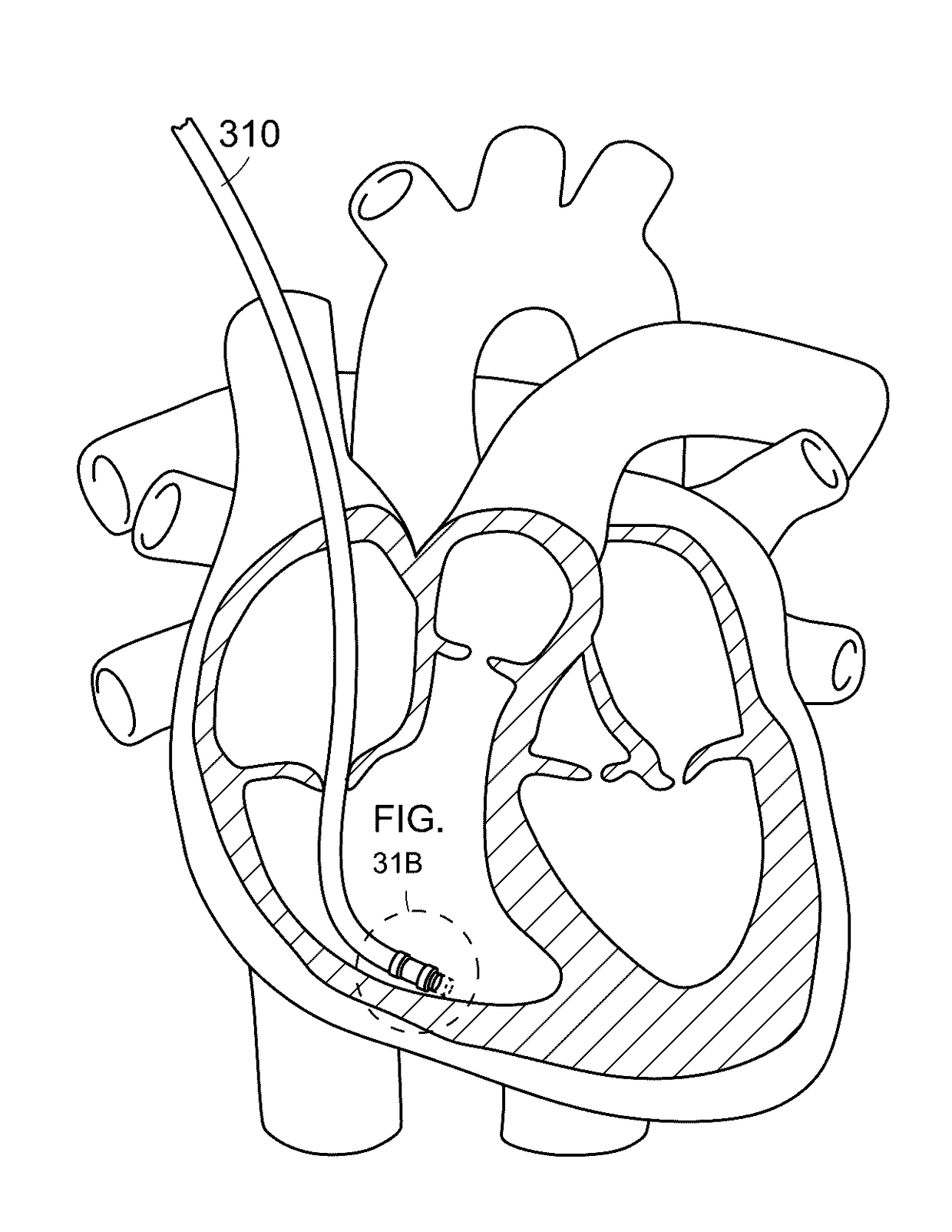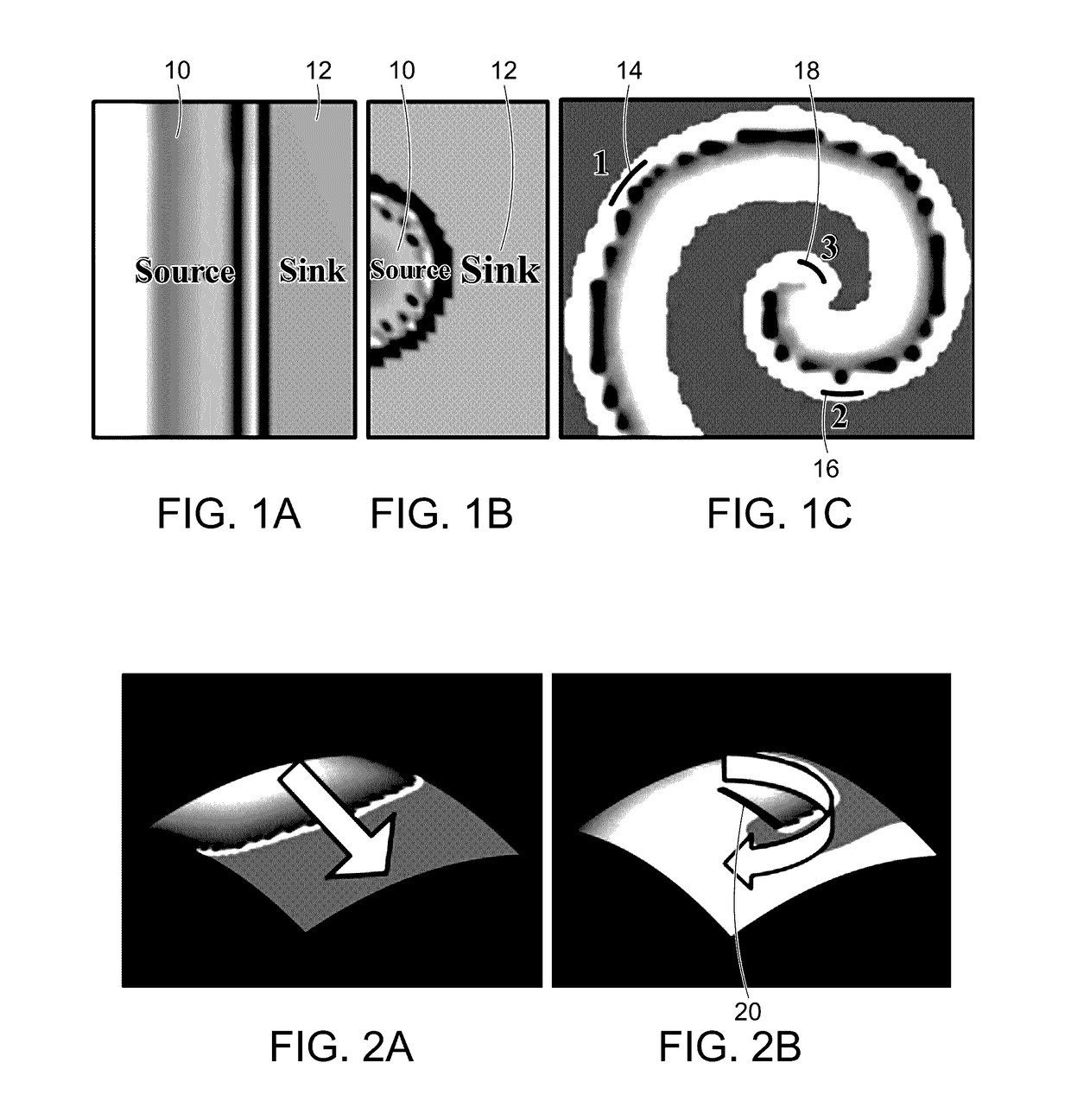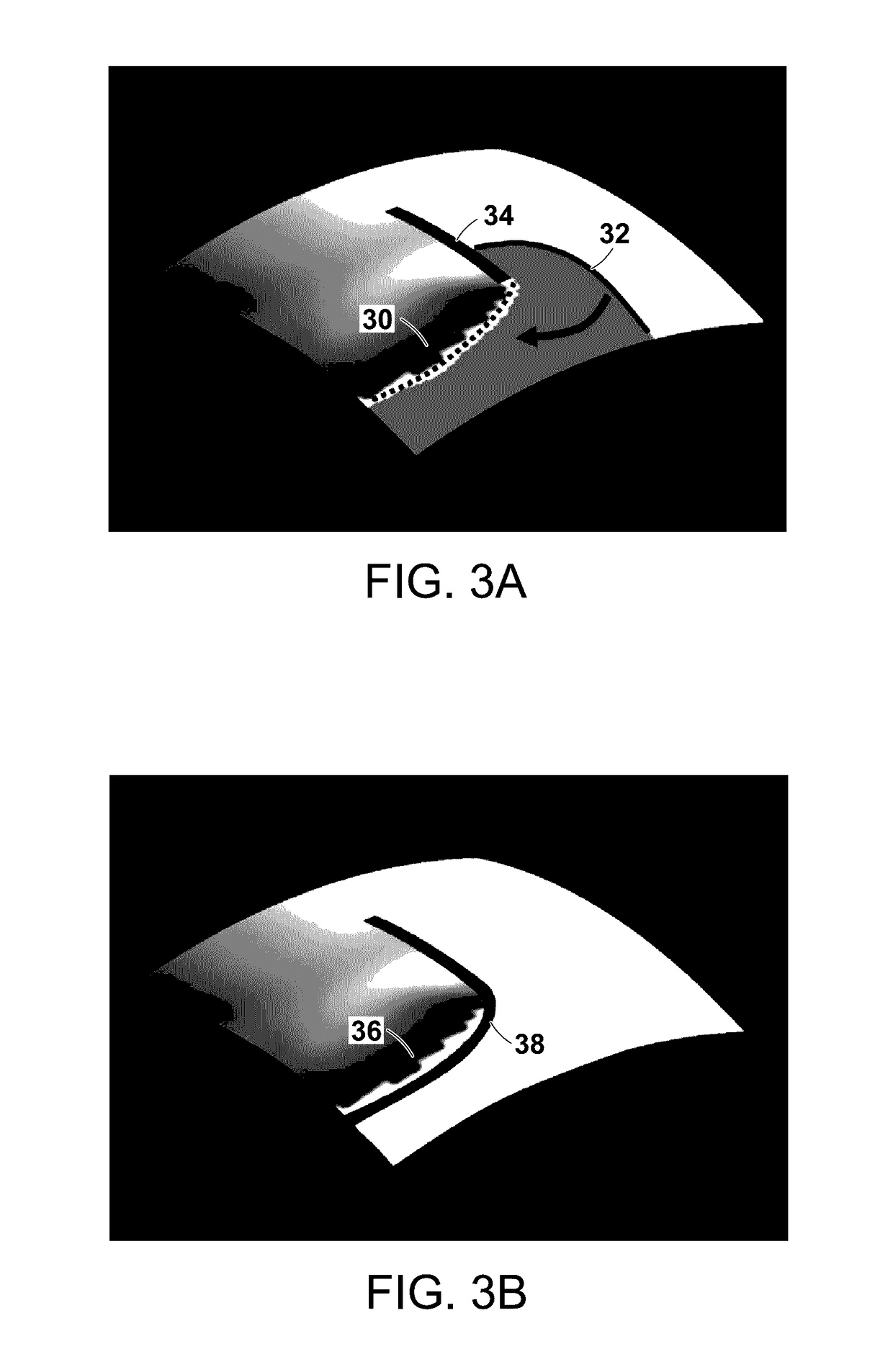Catheters, systems, and related methods for mapping, minimizing, and treating cardiac fibrillation
a technology of cardiac fibrillation and mapping, applied in the field of physiology, can solve the problems that the prior ablation art fails to recognize the importance of provide methods and systems for gauging the fibrillogenicity of patients, and achieves the effect of conduction of atria, effectiveness and efficiency
- Summary
- Abstract
- Description
- Claims
- Application Information
AI Technical Summary
Benefits of technology
Problems solved by technology
Method used
Image
Examples
Embodiment Construction
[0106]Embodiments of the present invention include new methods and systems for preventing, treating, and at least minimizing if not terminating cardiac fibrillation in the substrate responsible for initiation and perpetuation of fibrillation and for optimized treatments of that substrate, which are predicated on the recognition and modeling of the actual physiological information, including the electrophysiologic principles, underlying fibrillation, and detecting contact between a tissue and an electrode. These methods and systems make it possible for a clinician to develop and implement patient-specific, tailored fibrillation treatment, minimization, and prevention strategies. More specifically, embodiments of the present invention allow a clinician to minimize or prevent further episodes and increase the success rate of ablation in fibrillation patients by preventing “reentry,” which perpetuates fibrillation as described in greater detail below.
[0107]The methods and systems embody...
PUM
 Login to View More
Login to View More Abstract
Description
Claims
Application Information
 Login to View More
Login to View More - R&D
- Intellectual Property
- Life Sciences
- Materials
- Tech Scout
- Unparalleled Data Quality
- Higher Quality Content
- 60% Fewer Hallucinations
Browse by: Latest US Patents, China's latest patents, Technical Efficacy Thesaurus, Application Domain, Technology Topic, Popular Technical Reports.
© 2025 PatSnap. All rights reserved.Legal|Privacy policy|Modern Slavery Act Transparency Statement|Sitemap|About US| Contact US: help@patsnap.com



